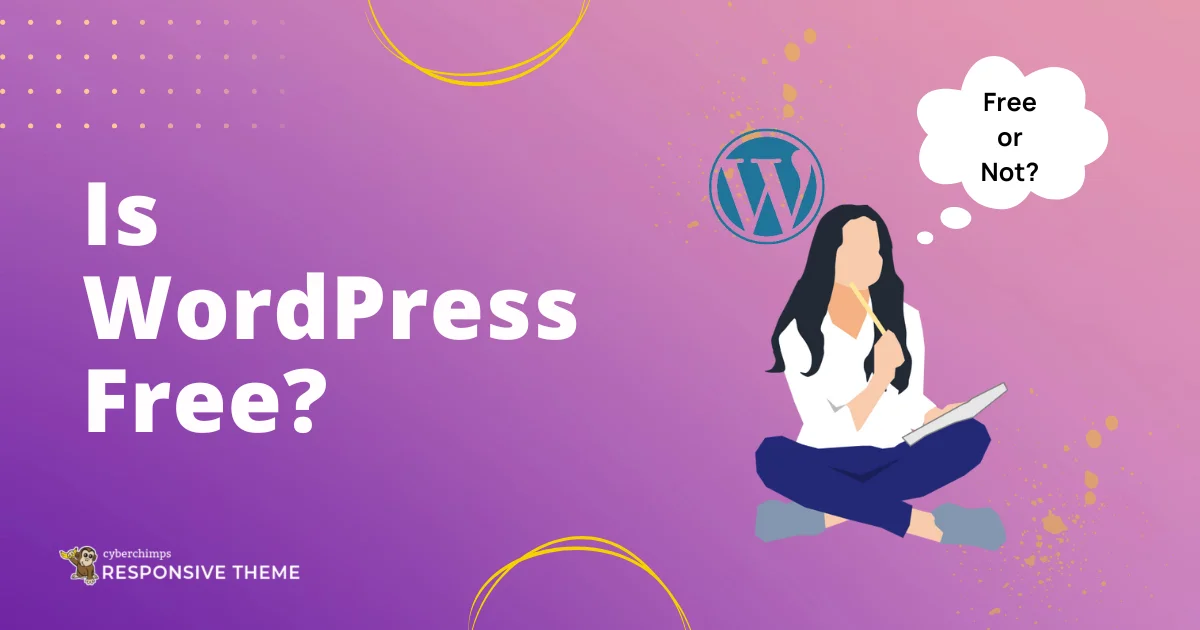Is WordPress free?
WordPress is widely recognized among the top choice of users as a free website and content management software.
However, the significant confusion users encounter when choosing WordPress as a CMS for their business is its pricing.
While it’s true that WordPress, as an open-source content management system, costs nothing to download and install, there are hidden expenses that come with running a website.
This article will help you dive deep and explore the costs of using WordPress to build your website.
Let’s get started without further ado!
What Is WordPress?
WordPress is a popular open-source content management system (CMS) that powers over 40% of websites on the internet.
It allows users to create, manage, and modify websites without advanced technical skills. There are two versions of WordPress:
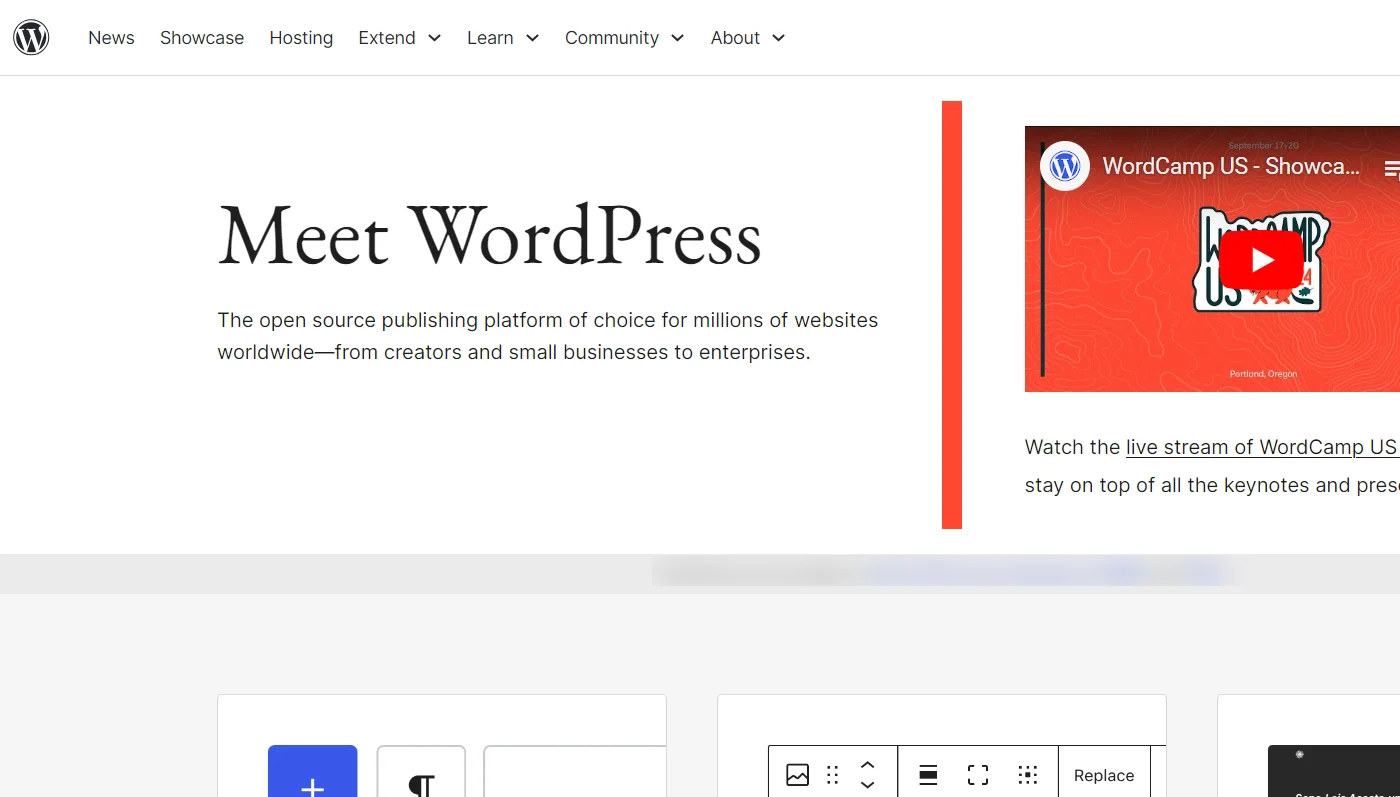
This is the self-hosted version, where users fully control their website’s customization, plugins, and themes. It requires users to purchase web hosting and a domain name, but it offers greater flexibility and scalability.
It is ideal for users who want a streamlined experience and access to a wide range of built-in features.
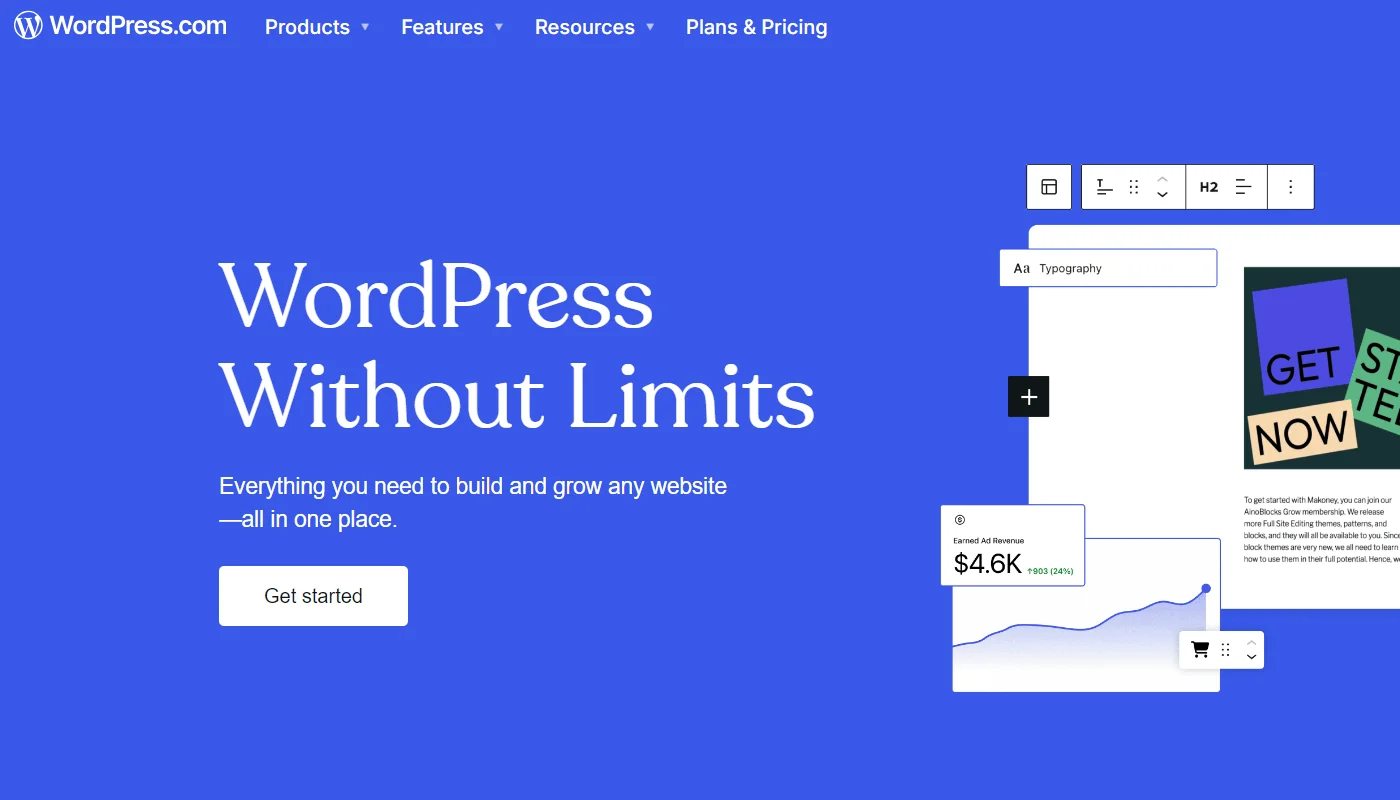
Also known as the self-hosted version, WordPress.org is free to download and use. It offers complete control and flexibility for customizing your website.
However, you’ll need to pay for web hosting, a domain name, and any premium themes or plugins you choose to use.
Difference Between WordPress.com and WordPress.org
| Feature | WordPress.com | WordPress.org (Self-Hosted) |
|---|---|---|
| Cost | Free to use but requires hosting domain and other costs | Free to use but requires hosting domain and other costs |
| Hosting | Hosting is included with WordPress.com | Requires purchasing your own web hosting |
| Custom Domain | Available only on paid plans | Full control to use any custom domain |
| Themes | Limited to pre-approved themes (free and paid) | Full access to any theme (free, paid, or custom) |
| Plugins | Not allowed on the free plan, limited on paid plans | Full control to install any plugin |
| Ads | WordPress.com places ads on free sites | No ads unless you choose to monetize your site |
| Customization | Restricted customization on free plans | Full customization and control over site design |
| Maintenance & Security | Managed by WordPress.com | Self-maintained, but allows for choosing tools |
| Monetization | Limited to WordPress’s ad program on free plans | Full freedom to run any ads or monetization methods |
| SEO | Limited SEO control on free plans | Full SEO customization and plugin support |
| E-commerce | Available only on high-tier paid plans | Full e-commerce functionality with plugins like WooCommerce |
| Ownership | Limited ownership; WordPress.com controls backups and data | Full ownership and control of your website data |
How WordPress Makes Money
Well, regarding this, we need to discuss the pricing plans for both the available versions.
WordPress.com Pricing
WordPress.com offers a range of plans catering to different users, from individuals looking to create personal blogs to businesses needing eCommerce solutions.
The pricing plans are structured as follows:
| Plan | Cost | Features |
|---|---|---|
| Free Plan | $0 | – WordPress.com subdomain (e.g., yoursite.wordpress.com) – 1 GB storage – WordPress ads – Basic design customization and limited themes – Limited support access Best for: Beginners or hobby bloggers |
| Personal Plan | $4/month (billed annually) | – Free custom domain for one year – 6 GB storage – No ads – Email and live chat support – Access to hundreds of free themes and basic design tools Best for: Personal websites or blogs needing a branded domain |
| Premium Plan | $8/month (billed annually) | – 13 GB storage – Advanced design customization (including CSS editing) – Monetization options (ads, affiliate marketing) – Video hosting – Google Analytics integration – Access to premium themes Best for: Freelancers or bloggers looking to monetize with advanced design tools |
| Business Plan | $25/month (billed annually) | – 200 GB storage – Ability to install third-party plugins and themes – Advanced SEO tools – Automated backups and security scans – Email or live chat support Best for: Small businesses needing plugin flexibility and professional support |
| eCommerce Plan | $45/month (billed annually) | – All features of the Business Plan – Full suite of eCommerce features (payment gateways, inventory management, shipping options) – Integration with top eCommerce tools like WooCommerce – Access to premium themes optimized for online stores Best for: Businesses selling products or services online |
WordPress.org Pricing
As mentioned earlier, WordPress.org, also known as the self-hosted version of WordPress, is an open-source platform that is free to download and use. However, “self-hosted” means that users must manage the costs of running and maintaining their website.
These costs can vary depending on the hosting provider, chosen themes, plugins, and additional services you may require for your website.
Below is a detailed breakdown of the typical costs involved when using WordPress.org:
| Cost Component | Price Range | Details |
|---|---|---|
| Hosting | $3 – $30+ per month | Varies based on shared, VPS, dedicated, or managed WordPress hosting. |
| Domain | $10 – $20 per year | Custom domain required for branding, sometimes free for the first year. |
| Premium Themes | $20 – $100 (one-time/year) | Paid themes offer better customization and support than free themes. |
| Premium Plugins | $30 – $300 per year | Costs depend on the plugin’s functionality (SEO, eCommerce, security, etc.). |
| SSL Certificate | $0 – $200 per year | Free SSL from or paid-for advanced security options. |
1. Hosting Costs
Since WordPress.org is a self-hosted platform, web hosting is the most significant ongoing cost. There are several types of hosting options to choose from, each with varying price points:
- Shared Hosting: Shared hosting is the most affordable and beginner-friendly option. With shared hosting, multiple websites share the same server, making it a cost-effective solution for smaller websites with low traffic. Prices range from $3 to $10 per month, depending on the provider and the features offered.
- VPS Hosting: Virtual Private Server (VPS) hosting provides more control and resources than shared hosting by creating a virtual environment on a physical server. It’s suitable for websites with moderate traffic that need more performance than shared hosting can offer. VPS hosting costs range from $20 to $100 per month.
- Dedicated Hosting: Dedicated hosting offers the highest level of performance and control, as you get an entire server dedicated to your website. It’s ideal for large businesses or high-traffic websites but comes at a higher cost. Dedicated hosting can range from $80 to $300 per month.
- Managed WordPress Hosting: Managed WordPress hosting handles the technical aspects of running a WordPress site, including updates, backups, and security. While more expensive than shared hosting, it offers convenience and performance optimization for WordPress users. Prices typically range from $20 to $50 per month. Popular managed WordPress hosts include WP Engine, Kinsta, and Flywheel.
2. Domain Name Costs
To create a professional-looking website, you must purchase a custom domain name (e.g., yoursite.com).
While some hosting providers offer a free domain for the first year, renewing it afterward typically costs between $10 to $20 per year.
You can register domains through hosting providers, domain registrars like GoDaddy, or platforms like Namecheap.
3. Themes
Themes are essential for determining your site’s layout, design, typography, and overall appearance. WordPress.org offers thousands of free and premium themes, allowing users to change the look and feel of their website.
When choosing a theme, consider factors like speed, mobile responsiveness, customization options, and compatibility with popular plugins.
One highly recommended theme for WordPress.org users is Cyberchimps’s Responsive Theme.
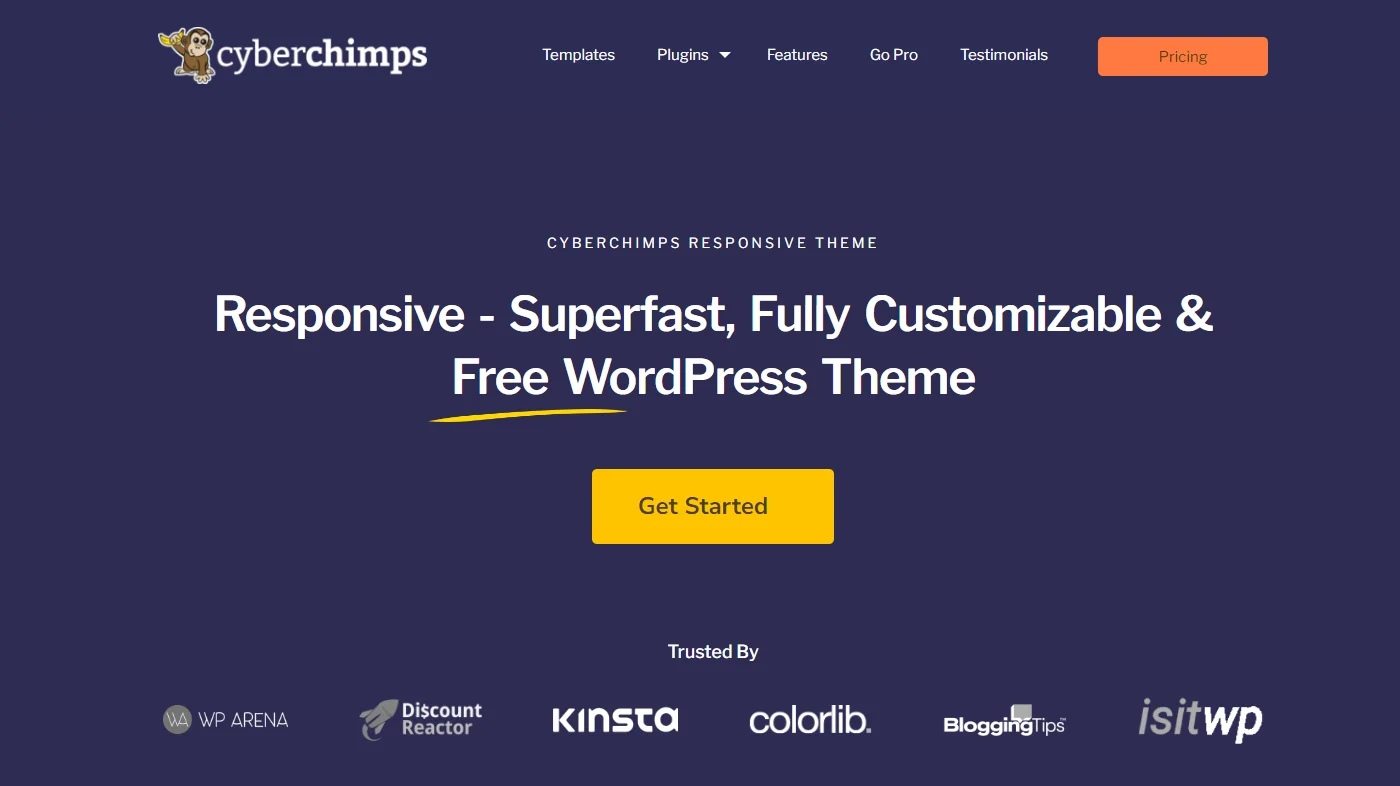
The Responsive Theme is a versatile, feature-rich theme that boasts a 100% GTMetrix score, ensuring fast loading times.
In addition, this theme offers over 250 ready-to-use templates that can be imported with a single click, making it suitable for users with diverse website needs.
Designed for performance, the Responsive Theme adheres to the latest coding standards, ensuring pages load in under two seconds and weigh less than 100 KB. Its mobile-friendly design ensures your site looks great across all devices.
The basic Responsive Theme is free, but users looking for enhanced features can upgrade to the premium version, Responsive Plus, for $29.50 per year. It’s an excellent choice for anyone seeking a flexible, fast, customizable theme.
4. Plugins
Plugins are essential tools in WordPress.org that allow users to extend the functionality of their website.
WordPress.org offers thousands of free and premium plugins. These plugins help you add features like SEO, social media integration, eCommerce functionality, and more to enhance your site’s performance and user experience.
When selecting plugins, consider factors like ease of use, compatibility with other tools, and your website’s specific needs.
Two highly recommended plugins for WordPress users are Responsive Addons for Elementor (RAE) and Responsive Blocks for Gutenberg.
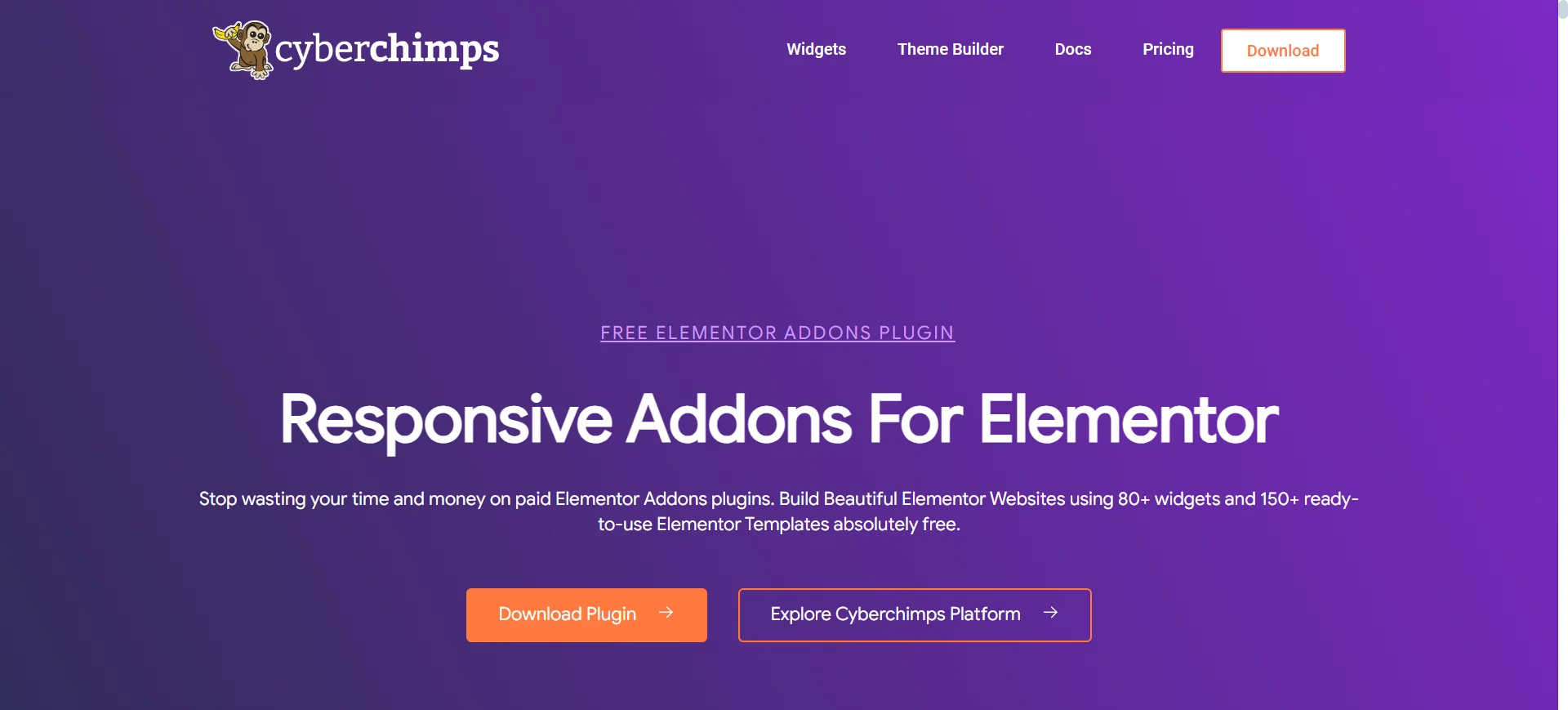
Responsive Addons for Elementor (RAE) is a powerful free plugin that works with the popular Elementor page builder.
It offers over 80 advanced widgets and 250+ pre-designed Elementor templates to enhance your website’s design and functionality. The plugin includes features like a Theme Builder, Cross-Site Copy-Paste, Particles Background, and Sticky Section, all of which make customizing every aspect of your website simple through a drag-and-drop interface.
With its intuitive and user-friendly design, RAE is an ideal choice for quickly creating fully responsive, dynamic websites.
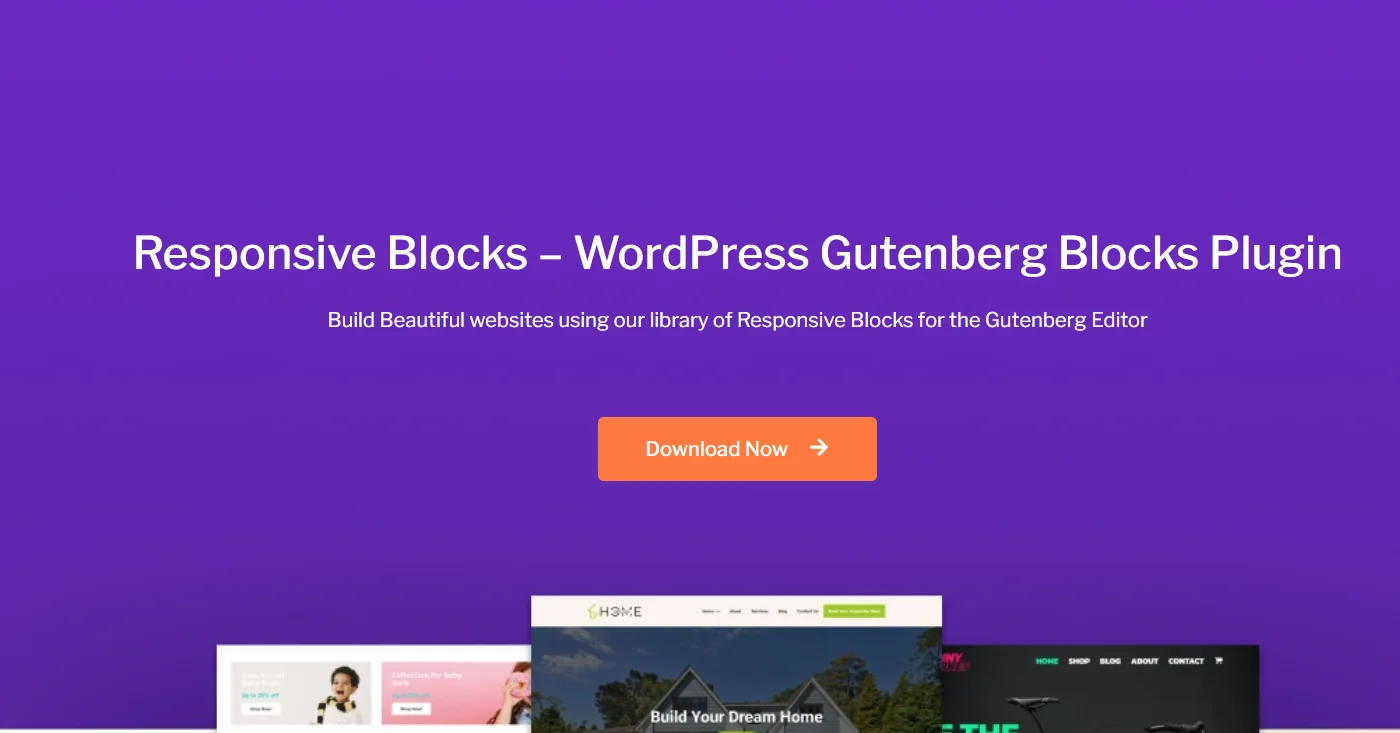
Responsive Blocks for Gutenberg is another feature-packed plugin that extends the capabilities of the default WordPress block editor.
With over 50 highly functional widgets and 100+ free Gutenberg templates, you can build a feature-rich website effortlessly. The plugin’s drag-and-drop interface and library of ready-to-use templates make it easy to create a website in just a few clicks.
Both Responsive Addons for Elementor and Responsive Blocks for Gutenberg are free, open-source plugins, making them excellent options for users looking to enhance their website without additional costs.
5. SSL Certificate
An SSL (Secure Socket Layer) certificate is essential for securing your website and enabling HTTPS, which helps with SEO rankings and builds trust with visitors.
Many hosting providers include free SSL certificates via services like Let’s Encrypt. However, some may require you to purchase one, especially if you need advanced features or extended validation.
SSL certificates cost between $10 and $200 per year, depending on the level of security required.
Advantages of Making a Website with WordPress
Now that we’ve covered the basics of WordPress pricing, you might wonder why many people choose WordPress to build their websites.
Well, WordPress is popular not just because it’s accessible and affordable but also because it’s packed with features that make website creation easier, more flexible, and highly customizable.
Some of the key advantages of using WordPress:
1. Open-Source and Free
WordPress is an open-source platform that is free to install and use. As open-source software, it is constantly updated and improved by a vast community of developers worldwide.
2. User-Friendly for Beginners
One major reason for WordPress’s dominance is its ease of use. Even if you’re a beginner with no web development experience, WordPress provides an intuitive interface that’s simple to navigate.
With drag-and-drop builders like Elementor and Gutenberg, you can design your site’s layout any coding.
3. SEO-Friendly
WordPress is structured with SEO in mind, which is crucial for growing your online presence. Clean, optimized code helps search engines index your site quickly, and you can enhance your site’s SEO further with popular SEO plugins.
4. Mobile-Responsive Designs
In today’s mobile-first world, having a website that looks great on all devices is critical. Most WordPress themes are designed to be responsive, meaning your site will adapt to various screen sizes across all devices.
5. Scalable for Growth
WordPress can grow with you whether you’re starting small with a blog or planning to build a large-scale eCommerce site.
You can start with a simple site and add more features, content, or eCommerce functionality as your traffic grows without switching platforms.
6. Active Community Support
As the most widely used CMS, WordPress has a thriving community of users, developers, and experts. You can easily find help through tutorials, forums, official documentation, or even hiring WordPress professionals.
FAQ
Yes, WordPress.org is free to download and use. However, there are additional costs like hosting, domain names, and premium themes or plugins. WordPress.com offers a free plan, but advanced features require paid subscriptions.
WordPress.com is a hosted platform with limited control and customization, offering free and paid plans. WordPress.org is self-hosted, providing full ownership and flexibility but requires users to pay for hosting, domains, and additional features.
No, you don’t need coding skills to use WordPress. The platform provides user-friendly interfaces, drag-and-drop builders like Elementor, and a wide variety of themes and plugins, making it accessible for beginners without technical expertise.
Ongoing costs include hosting ($3–$30/month), domain renewal ($10–$20/year), premium themes, plugins, and SSL certificates. The total cost depends on the level of customization and services required for your site’s needs.
Conclusion
While WordPress is often considered “free,” various costs are associated with running a fully functional website, depending on your chosen version and the specific features you need.
WordPress.com offers affordable plans with limitations, while WordPress.org provides complete control but requires investment in hosting, domains, and other services.
Despite these expenses, WordPress remains an affordable, highly customizable, scalable, and user-friendly platform, making it ideal for users of all skill levels.
If you liked this article, you can also consider reading:
- How to Change the Logo & Site Title in WordPress
- How to Set Your WordPress Homepage
- How to Fix a 400 Bad Request Error (6 Proven Methods)
Check out the Responsive Theme by Cyberchimps to create a multi-purpose WordPress website.

